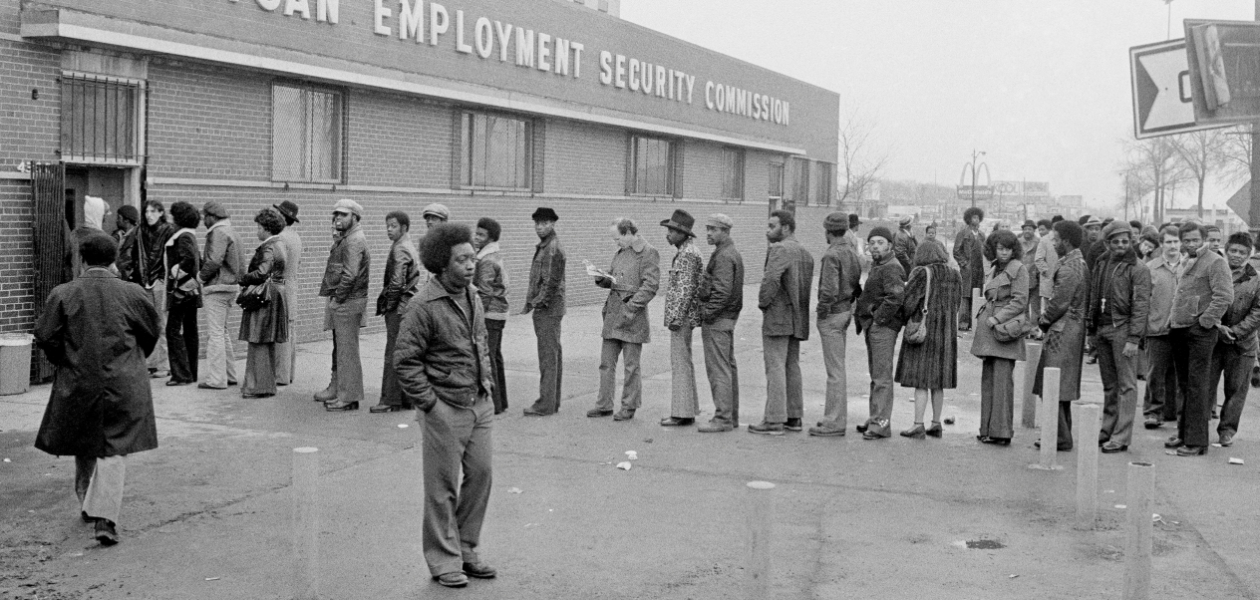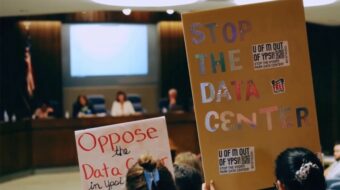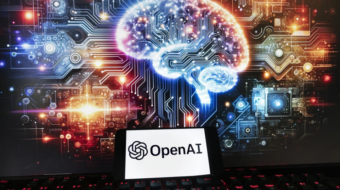
Whenever the Federal Reserve announces interest rate hikes, a lot of working people wonder what it means for them. If you’re buying a home or have an adjustable rate mortgage already, then you can expect the interest offer you get from the bank to be higher. Perhaps the loan you want to take out for a car or to renovate the house will be more expensive.
But beyond that, interest rates can sometimes seem like one of those abstract, opaque things that are just part of the black box called “the economy.” How does all this financial tinkering in Washington affect our lives?
As it turns out, it could turn our lives upside down—and that’s exactly what big interest rate hikes are intended to do.
Monetary policy is one of the main ways capitalists exercise their power outside the workplace, but by keeping discussions of inflation and interest rates overly technical and boring, they make sure most of us aren’t paying much attention to what they’re doing.
Calling out inflation when you see it is the easy part. All of us have been feeling the pinch of higher prices at the grocery store, the mall, and the gas pump. When our paychecks don’t buy as much as they used to, no one needs to tell us inflation is happening.
But what are the causes of inflation, and how are interest rates connected?
Basic economics textbooks give a simple explanation for inflation: Too much money chasing after too few goods. But that leaves a lot of unanswered questions. Why is there too much money, and who says how much money there should be? Why are there too few goods, if that is the case? Who’s setting the prices that are charged, and do those prices truly reflect “supply and demand”?
Blame public programs and greedy workers
Neoliberal economists from Wall Street, corporate CEOs, business media figures, Republican politicians, and more than a few Democratic elected officials usually point the finger for inflation at two things.
First, they say the government spends too much on public programs or gives away too much stimulus money, flooding the country with cash. They want us to forget that U.S. public infrastructure and services are already woefully underfunded. And they think we don’t remember how millions of us lost our jobs when COVID lockdowns crashed the economy and extended unemployment benefits and stimulus checks were the only way we were able to survive.
Second, they argue the reason there’s too much money circulating in the economy is because workers get paid too much and unemployment is too low. When jobs are easy to get and bosses have trouble finding workers, employees are able push to get back more of the value they produce. Better wages and jobs for everyone put the squeeze on capitalists’ profits, which is totally unacceptable to the masters of the economy.
They prefer a situation where it’s easy for them to find the labor they need but jobs are just scarce enough that workers can’t afford to lose the one they’ve got. In that situation, the calculation goes, workers will stop doing things like demanding higher pay or joining unions.
For the top 1% and their representatives in Washington’s financial bureaucracy, controlling inflation is also code for controlling workers. But they prefer more technical-sounding language, like combatting the “wage-price spiral.”
Their formula for fighting inflation is simple: slash public spending and create joblessness.
The first one is easy to do. There are plenty of hired guns in Congress (every single Republican and many Democratic renegades, like Sens. Joe Manchin and Kyrsten Sinema) who can be counted on to scuttle using the people’s money for the people’s needs whenever they have the chance.
For the second task—cutting jobs and wages—that’s where the Federal Reserve and interest rates come into play.

At a Sept. 21 press conference, Fed chair Jerome Powell outlined what he sees as his agency’s mission: “We have to get supply and demand back into alignment and the way we do that is by slowing the economy…and soften labor market conditions.”
Translation: The central bank is planning to trigger a recession on purpose in order to weaken the bargaining power of workers vis-à-vis employers. Powell’s task is to calibrate his interest rate hikes to drag the economy down just enough to discipline workers, but not so far down that he hurts employers too much.
That might sound absurd, but that’s exactly what capitalist economic orthodoxy calls for, and it’s happened before.
The capitalist class’s most powerful weapon
The Federal Reserve is like the bank of all banks; it sits at the top of the U.S. financial system, setting the terms of lending and borrowing all the way down to your local neighborhood bank branch.
It is made up of twelve district public reserve banks covering the entire U.S. Each of those districts is in turn “owned” by the largest private banks in their area that hold stock as members of the system. It is overseen by a Board of Governors appointed by the president and confirmed by the Senate for a term of 14 years—longer than any other public official besides judges.
Its job is to manage the availability of money and credit. From consumers buying houses to giant steel corporations taking out loans to build a new mill, the Fed’s decisions set the bounds for levels of financing in our economy.
When it was established at the beginning of the last century, the Fed was given the mandate of ensuring stable prices and promoting maximum employment. Over time—and especially during the heyday of right-wing neoliberal economics—the maximum employment part was tossed overboard. Guaranteeing price stability via interest rate manipulation became the overriding focus.
And since the Fed enjoys “independence” from any kind of Congressional control or democratic oversight, it can pretty much do whatever it wants without fear of repercussion. Politicians or the public can complain about the decisions it might take, but they can’t really do much.
The whole system is designed that way; central banks around the world in most capitalist countries have been liberated from politics in order to make sure there is always a check on governments tempted to do things that finance capital doesn’t like.
Historian James Livingston, who studied the background of central banking in the U.S., wrote that “the origins of the Federal Reserve System lie in the awakening and articulation of capitalist class consciousness.” Governments and left-led political movements may come and go, but ultimate capitalist control is always assured thanks to a financial system totally removed from democratic oversight.
This unelected body rules over the U.S. economy with essentially unrestrained power, and thus exerts influence over the entire world because of U.S. capitalism’s international dominance. It’s the reason for the old Marxist joke that the real seat of power in Washington, D.C. isn’t the Capitol, but rather the Federal Reserve Bank building.
Disciplining labor
The most dramatic episode of the Fed exercising its power on behalf of capital was the so-called “Volcker Shock” of 1979. Workers who lived through the 1980s remember the plant closings, mass layoffs, and anti-union campaigns of the Reagan years. The president, General Motors, Pittston Coal—those villains were readily apparent. But the role the Fed played in launching the bosses’ offensive often goes unnoticed.
The ’70s had seen an unexpected combination of stagnant economic growth in the U.S. and rising inflation—a situation described as “stagflation.” There were a variety of reasons for the malaise, some real, others exaggerated: overruns related to the military spending bonanza of the Vietnam War, the manipulation of energy prices by the major oil-producing countries, the declining profit rates in many U.S. companies brought on by automation, and the growing power of labor unions pushing wage rates higher.

Economist Paul Volcker, who’d spent much of his career bouncing back and forth between Chase Manhattan Bank and government jobs, was nominated by President Jimmy Carter to take over the central bank in the summer of 1979. Volcker was clear about where he put the blame for inflation and what had to be done about it. “The standard of living of the average American has to decline,” Volcker told Congress, “I don’t think you can escape that.”
Volcker quickly got to work to achieve his goal. The interest rate was just over 10% when he took office, already well above the 5% it had averaged for the quarter-century prior. But the new Fed chairman sent the rate soaring to 17% within six months; by early 1981, it reached an unprecedented 19%!
By exploding the costs of borrowing, the Fed wanted to force companies to forego loans, halt their hiring plans, and embark on major cost-cutting to meet debt obligations. Firms unable to make payments on loans they already owed would go belly up, taking their workers down with them—sacrifices for the greater good of capital.
The plan worked.
The U.S. economy went into a steep recession, with unemployment climbing to nearly 11% overall, and over 20% for Black workers—numbers that until that time were the highest since the Great Depression and which wouldn’t be exceeded until the coronavirus crisis. A wave of plant closures swept the country, bringing massive layoffs and speeding up deindustrialization.
“The standard of living of the average American has to decline.” – Federal Reserve Chairman Paul Volcker, 1979.
Volcker even had a more direct hand in the destruction of U.S. trade unionism. He designed the Chrysler bailout agreement of late 1979 that forced the United Auto Workers to keep the company afloat by accepting disastrous two-tier contracts which became a model for the rest of corporate America. It was an achievement Volcker remained forever proud of, but he did share some credit with President Ronald Reagan, whose crushing of the air traffic controller’s strike he called an “important but little-recognized contribution to the fight against inflation.”
Sold to the public as a technocratic solution to the mysterious problem of stagflation, the interest rate offensive was an intentional act aimed at strangling organized labor and putting power in the hands of high finance. As Marxist economists Leo Panitch and Sam Gindin wrote, the Volcker Shock was “not so much about finding the right monetary policy as shifting the balance of class forces in American society.”
The hollowing out of America’s industrial economy broke the backs of the unions that had built the much-celebrated “middle class” of the 1950s and ’60s. Manufacturing giants like GM and Ford shifted their focus from making things at home in the United States to manipulating international money markets and chasing cheap labor around the globe.
The big banks and international financial institutions got a further boost from Volcker and the Fed, who helped craft the “structural adjustment programs” that forced developing countries to privatize their public industries and slash spending in order to get the loans they desperately needed. The sovereign debt crises forced on the countries of Latin America, Africa, and parts of Asia over the next two decades were the result of this shock therapy. Volcker said it was treatment for governments’ supposed “chronic absence of suitably disciplined economic policies.”
The power of finance capital grew dramatically as a result of the Fed’s campaign. It helped set off a speculative stock frenzy that lasted years and resulted in greater and greater economic instability, as evidenced in the 1987 stock market crash, the late ’90s dot.com bust, the sub-prime mortgage collapse, the Great Recession, and more.
Inflation was tamed, but at the cost of greater inequality, more precarious jobs, flat wage growth, soaring debt levels for American families, and the death of unions. Places like Flint, Mich., Youngstown, Ohio, and Pittsburgh, Penn., bore the brunt of those dark years. As joblessness soared, so too did suicide rates, alcoholism, drug abuse, domestic violence, and homelessness. And as is usually the case under U.S. capitalism, Black and brown workers were hit the hardest.

Deregulation, “welfare reform,” and outsourcing followed. It’s no exaggeration to say that the political situation created by the Fed’s attacks on workers helped foster the development of right-wing populist movements like the Tea Party and Trumpism.
Looking back on the period, Samir Sonti, a labor studies professor at the City University of New York, said that Volcker “launched the decisive battle of the twentieth century’s class war.” The Federal Reserve’s solution to America’s economic problems was to simply give capital what it wanted and make workers pay the bill.”
Volcker’s world
The Federal Reserve of today still lives in the world created by Volcker. Though the current Fed chair, Trump’s hand-picked private equity mogul Jerome Powell, may not adhere to exactly the same extremist line taken by Volcker, neoliberal economic ideology still pervades the central bank’s approach to the economy.
It appears the Fed is leaning more and more toward putting the blame—and the burden—on workers for the inflation problem. The quickening pace of interest rate hikes suggests Powell is reading from Volcker’s playbook. Earlier this summer, Powell declared his goal was to “get wages down.” He didn’t say anything, however, about the skyrocketing compensation of his former banking colleagues on Wall Street.
If the Fed embarks on another overt attack on workers, it will be ignoring many of the real issues that are actually driving price inflation today: global product supply chains still hobbled by COVID (especially in China), ballooning energy prices linked to the war in Ukraine, the U.S. affordable housing crisis (runaway rents), corporate monopoly pricing power, and outright price-gouging.
In fact, 2021 was the best year ever for the Fortune 500 when it comes to “total profits, profit margins, and profits per employee.” The oil and gas companies are recording their highest profits in history.
“By moderating demand…that would give us a chance…to get wages down.” – Federal Reserve chair Jerome Powell, 2022.
Other than the AFL-CIO and some progressive economic think-tanks (read reports here, here, here, and here), too few are talking about these problems. The evidence shows that wages are not driving inflation, by and large; in fact, workers’ pay is struggling to keep up with price hikes.
Josh Bivens of the Economic Policy Institute has crunched the numbers and found that fatter profit margins account for 54% of inflation since the pandemic started, while wage costs contributed only 8%. Non-labor cost pressures accounted for the other 38%.
If workers and their wages are the smallest contributor to inflation, why are they getting all the blame and being forced to bear the consequences? That’s because the business press controls the narrative, and finance capital controls the Fed. If the job cuts the Fed is now predicting become a reality, it will mean at least 1.2 million more unemployed people by the end of 2023.

The White House isn’t going to be much help in this fight. Before meeting with Powell and Treasury Secretary Janet Yellen earlier this year, President Joe Biden said his plan for addressing inflation “starts with the simple proposition: respect the Fed and respect the Fed’s independence.”
Essentially, that means giving Powell freedom to do whatever he deems necessary. Too bad for Biden and the Democrats that voters usually hold presidents and politicians responsible for their hardships and not unelected central bankers. And too bad for the rest of us that that could mean Republican gains in the midterms. At least the Democrats try to keep up some level of public spending; the GOP is always determined to shrink public spending on everything except the military and tax cuts for the rich.
There are other alternatives to damaging interest rate hikes and an intentional economic recession.
- If corporate price mark-ups—and not higher wages—are the primary source of inflation, then the right policy response should be an excess profits tax. Take away the incentive for corporations to gouge consumers.
- To deal with supply chain bottlenecks, the government could invoke the Defense Production Act and mandate the manufacturing of goods that are in short supply—just like it did with ventilators and masks during the pandemic and with tanks and planes during World War II.
- Price controls could be placed on utilities, food, and housing. Rep. Jamaal Bowman has proposed the Emergency Price Stabilization Act in Congress which would do just that.
- Energy inflation could be combatted by supporting immediate negotiations to end the war in Ukraine. Gas shortages would be alleviated in Europe and the bulging profits of both the oil and gas giants and the weapons producers would start to shrink.
Of course, the capitalist class can be expected to oppose every one of these measures. Instead, they will opt for the tried-and-true methods of offloading the crisis they’ve created onto the working class. Ultimately, the Federal Reserve system should be replaced by more democratic institutions answerable to the people’s needs. Banking as a whole should be taken out of private control and put into public hands—nationalize the banks and turn them into a public utility.
The irrationality of capitalism and the undemocratic political-financial superstructure that manages it are incompatible with the principle that the economy should serve people, not the other way around. Only socialism puts people before profit and makes the fulfillment of human needs its central purpose.
But until socialism comes, keep this in mind: The next time you hear someone on television talking about “cooling off the economy” or “taming inflation,” just know that they’re coming for your job and your paycheck.










